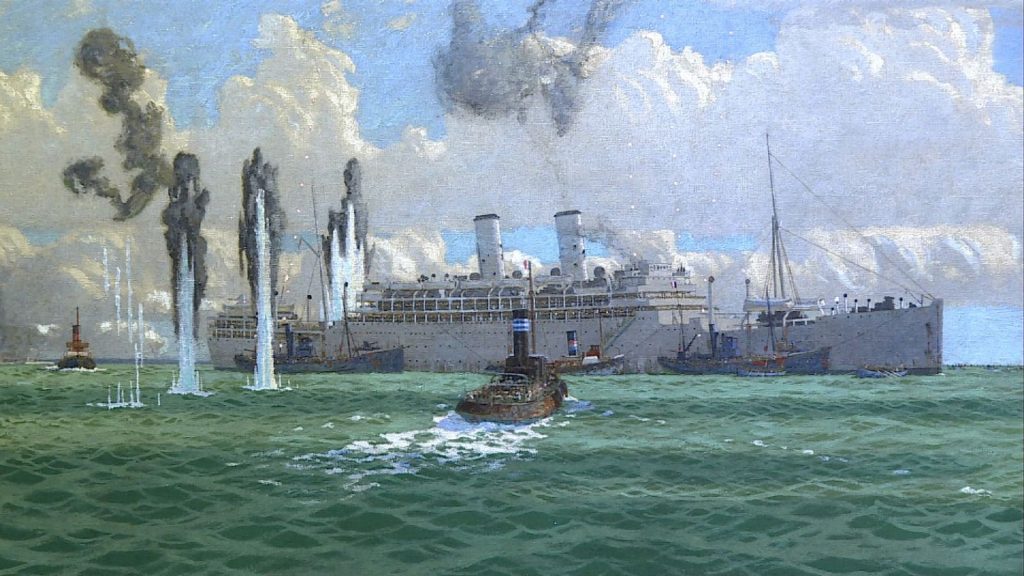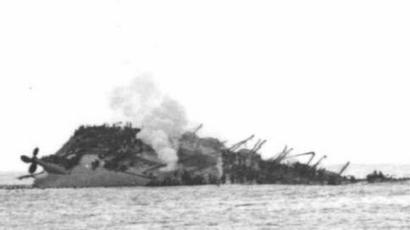Britains Worst Maritime Disaster.

When people are asked to name Britains worst maritime disaster, most would say the Titanic or even the Lusitania but they would be wrong as the worst disaster is the one least heard about, the RMS Lancastria. The Lancastria’s victims outnumber the Titanic 2-1 or even 3-1! The reason we do not know the accurate amount is that no accurate figure of the men, women and children on board was ever recorded.
The Lancastria was launched in 1920 by William Beardmore & Company for Anchor Line, a subsidiary of the famous Cunard Line. She was 578ft long.
The Lancastria was sunk on 17 June 1940 off the French port of St. Nazaire while taking part in Operation Ariel, the evacuation of British nationals and troops from France, two weeks after the Dunkirk evacuation.
She was originally sent to Quiberon Bay as part of Operation Arial (or Ariel), which was the evacuation of the remainder of the British Expeditionary Force which had been cut-off to the south of the German advance through France, amounting to some 124,000 men, mostly logistic support troops, from various ports in western France. Accompanying Lancastria was the 20,341-ton liner, Franconia. Finding that she was not required for the evacuation from Lorient, the captain of Lancastria, Rudolph Sharp, was sent on towards the port of St. Nazaire, where many more troops were waiting to be lifted, On the way, an air raid damaged the Franconia which returned to England for repairs, leaving Lancastria to continue alone. She arrived in the mouth of the Loire estuary late on 16 June. Because the port has to be accessed along a tidal channel, Lancastria anchored in the Charpentier Roads, some 5 miles (8.0 km) south-west of St. Nazaire, at 04:00 on 17 June, along with some thirty other merchant vessels of all sizes.
Early in the morning, three RNVR officers came aboard to ask how many troops the Lancastria could take. Her normal complement in troopship configuration was 2,180 including 330 crew; however, Captain Sharp had brought 2,653 men back from Norway, so he replied that he could take 3,000 “at a pinch”. He was told that he should take as many as he possibly could “without regard to the limits of International Law”. Troops were ferried out to Lancastria and the other larger ships by destroyers, tugs, fishing boats and other small craft, a round trip of three or four hours, sometimes being machine-gunned by German aircraft, although apparently without casualties. By the mid-afternoon of 17 June she had embarked an unknown number (estimates range from 4,000 up to 9,000) line-of-communication troops (including Pioneer and Royal Army Service Corps soldiers) and Royal Air Force personnel, together with about forty civilian refugees, including embassy staff and employees of Fairey Aviation of Belgium with their families. People were crowded into whatever spaces were available including the large cargo holds. One Royal Engineers officer reported that he had been told by one of Lancastria’s loading officers that over 7,200 people had come aboard. Captain Sharp estimated the number to be 5,500.
At 13:50, during an air-raid, the nearby Oronsay, a 20,000-ton Orient Liner, was hit on the bridge by a German bomb. Lancastria was free to depart and the captain of the British destroyer HMS Havelock advised her to do so but, without a destroyer escort as defence against possible submarine attack, Sharp decided to wait for Oronsay before leaving.

A fresh air raid began at 15:50 by Junkers Ju 88 bomber aircraft from Kampfgeschwader 30. Lancastria was hit by three or possibly four bombs. A number of survivors reported that one bomb had gone down the ship’s single funnel which is most likely, given the speed with which the ship sank – about 15-20 minutes. The testimony of an engineering officer, Frank Brogden, who was in the engine room at the time contradicts this. Brogden’s account states that one bomb landed close to the funnel and entered No. 4 hold. Two other bombs landed in No. 2 and No. 3 holds while a fourth landed close to the port side of the ship, rupturing the fuel oil tanks, though even with this damage, the ship should have stayed afloat for longer, unless the bomb in the funnel was true. As the ship began to list to starboard, orders were given for the men on deck to move to the port side in an effort to counteract it, but this caused a list to port which could not be corrected. The ship was equipped with sixteen lifeboats and 2,500 life jackets but many of the boats could not be launched because they had been damaged in the bombing or because of the angle of the hull. The first boat away was filled with women and children but it capsized on landing in the water and a second had to be lowered for them. A third boat had its bottom staved-in by landing too fast. A large number of men who jumped over the side were killed by hitting the side of the hull or had their necks broken by their life jackets on impact with the water. As Lancastria began to capsize, some of those who were still on board managed to scramble onto the ship’s underside and were heard to be singing ‘Roll Out the Barrel‘ and ‘There’ll Always Be an England‘, though this is strongly denied by some survivors. The ship sank at 16:12, within twenty minutes of being hit, which gave little time for other vessels to respond. Many of those in the water drowned because there were insufficient life jackets, or died from hypothermia, or were choked by fuel oil. The German aircraft began strafing survivors in the water and dropped flares into the floating oil.

Survivors were taken aboard other British and US evacuation vessels, the trawler HMT Cambridgeshire rescuing 900. There were 2,477 survivors, of whom about 100 were still alive in 2011. Many families of the dead knew only that they died with the British Expeditionary Force (BEF); the death toll accounted for roughly a third of the total losses of the BEF in France.She sank around 5 nmi (9.3 km) south of Chémoulin Point in the Charpentier roads, around 9 nmi (17 km) from St. Nazaire. The Lancastria Association names 1,738 people known to have been killed. In 2005, Fenby wrote that estimates of the death toll vary from fewer than 3,000 to 5,800 people although it is also estimated that as many as 6,500 people perished, the largest loss of life in British maritime history.
Churchill hyped Dunkirk and hid the disaster of the Lancastria. It made good political sense at the time, but almost 60 years later the survivors and their relatives still feel aggrieved at the way their story has been edged off the record.


